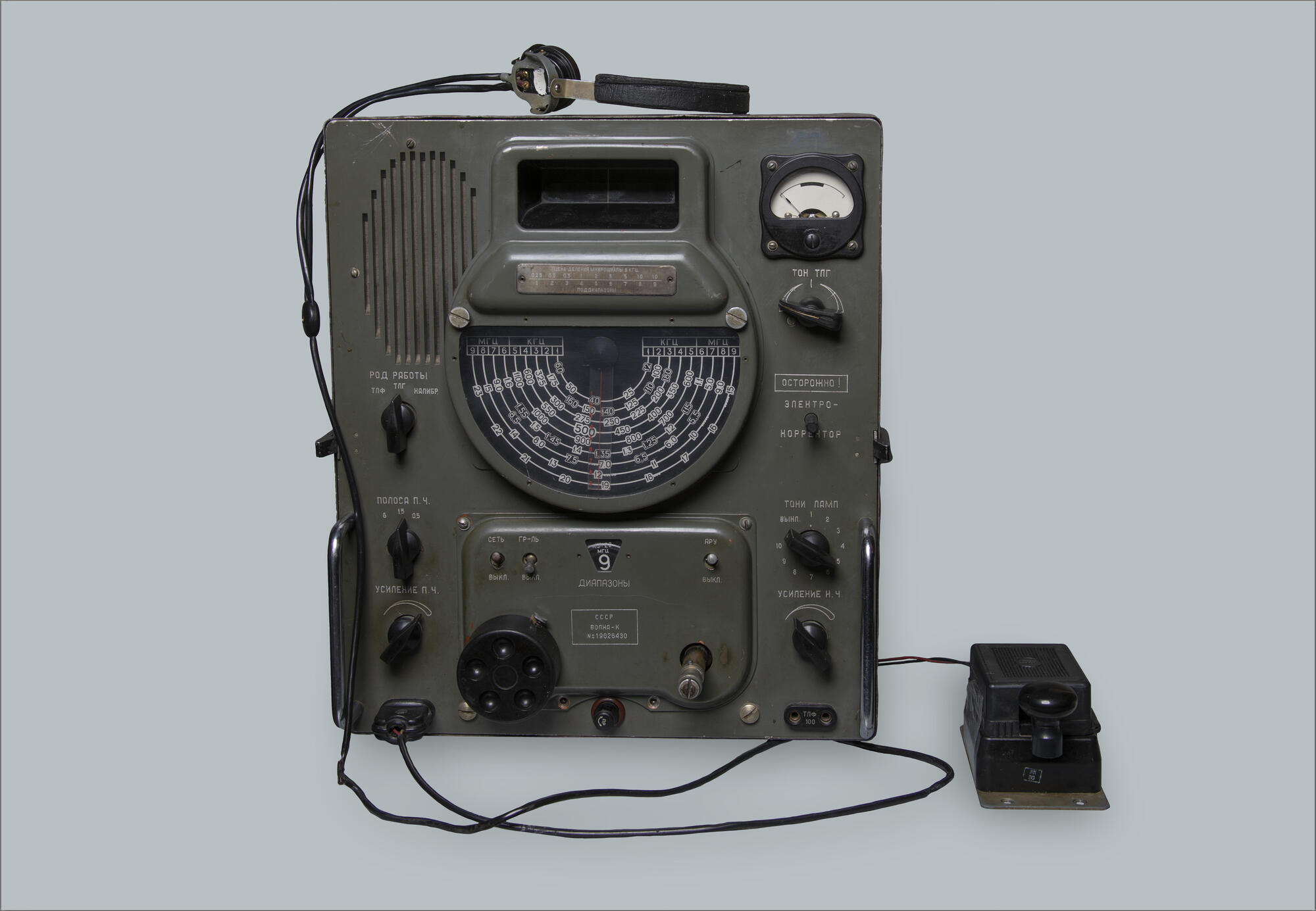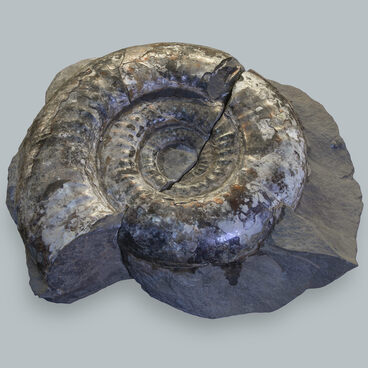“The Volna-K” is a desktop stationary tube radio receiver. As a superheterodyne device, it converts the received signal into a fixed intermediate frequency signal by amplifying it. This eliminates the need for frequency conversion of the narrowband filter, demodulator, and intermediate frequency amplifier, which improves the overall quality of the receiver.
The device was produced by specialists at the Alexandrov (Vladimir region) and Petropavlovsk S. M. Kirov plants from the 1950s to 1985.
This device was designed as a communicating MF/HF receiver for river and sea shipping — civilian transport and fishing vessels. It was used to provide auditory reception of telephone and telegraph signals as well as letterpress fax reception (“Volna-K” was included in the set of necessary equipment). However, the impact loads often led to circuit breakdowns, so the receiver, as insufficiently reliable, was relegated to auxiliary and then became a broadcast receiver. It used 14 six-volt series fingerstick tubes. Double frequency conversion is necessary to attenuate interference on the shortwave bands. The frequency of the “Volna-K” was set and readjusted manually by means of a sliding gauge. The frequency received is shown on a backlit scale. The built-in listening loudspeaker can be switched off with a toggle switch on the front panel, if necessary.
Similar communication devices were installed in the port of Dudinka and Dikson, as well as in remote district villages.
In 1916, a hydrometeorological station began operating at the Dikson radio station, and from September 1 regular hydrometeorological observations began to be conducted on the island. A water measuring station was established on the shore of the Kara Sea to monitor sea level fluctuations. Twice a day meteorologists transmitted radiograms to the Petrograd Geophysical Observatory. Continuous meteorological observations continue at Dikson to the present day.
The device was produced by specialists at the Alexandrov (Vladimir region) and Petropavlovsk S. M. Kirov plants from the 1950s to 1985.
This device was designed as a communicating MF/HF receiver for river and sea shipping — civilian transport and fishing vessels. It was used to provide auditory reception of telephone and telegraph signals as well as letterpress fax reception (“Volna-K” was included in the set of necessary equipment). However, the impact loads often led to circuit breakdowns, so the receiver, as insufficiently reliable, was relegated to auxiliary and then became a broadcast receiver. It used 14 six-volt series fingerstick tubes. Double frequency conversion is necessary to attenuate interference on the shortwave bands. The frequency of the “Volna-K” was set and readjusted manually by means of a sliding gauge. The frequency received is shown on a backlit scale. The built-in listening loudspeaker can be switched off with a toggle switch on the front panel, if necessary.
Similar communication devices were installed in the port of Dudinka and Dikson, as well as in remote district villages.
In 1916, a hydrometeorological station began operating at the Dikson radio station, and from September 1 regular hydrometeorological observations began to be conducted on the island. A water measuring station was established on the shore of the Kara Sea to monitor sea level fluctuations. Twice a day meteorologists transmitted radiograms to the Petrograd Geophysical Observatory. Continuous meteorological observations continue at Dikson to the present day.



